Percent Word Problems: Do your students stress out with percent problems? Are they at a total loss as they attempt to understand, set up, and solve? If your answer is yes, keep reading to discover strategies I have found most successful for teaching percent word problems.

#1 – Preparation to Solve Percent Word Problems
The most important strategy to ensure student success:
They must be confident with prior skills related to percent problems.
These skills include the ability to:
1. Round numbers found to the right of the decimal point
2. Convert between fractions, decimals, and percent
3. Recognize ratio relationships
4. Identify keywords and phrases related to percent word problems.
5. Solve a one-step equation.
Looking for information that will help you prepare? Tap on the link below.

#2 – Part and Whole
When visuals of part and whole, are provided, students visualize the words more clearly. Once students have made these connections they are prepared to plug values into an equation and successfully solve the problem. Below, are two examples illustrating percent, part, and whole.
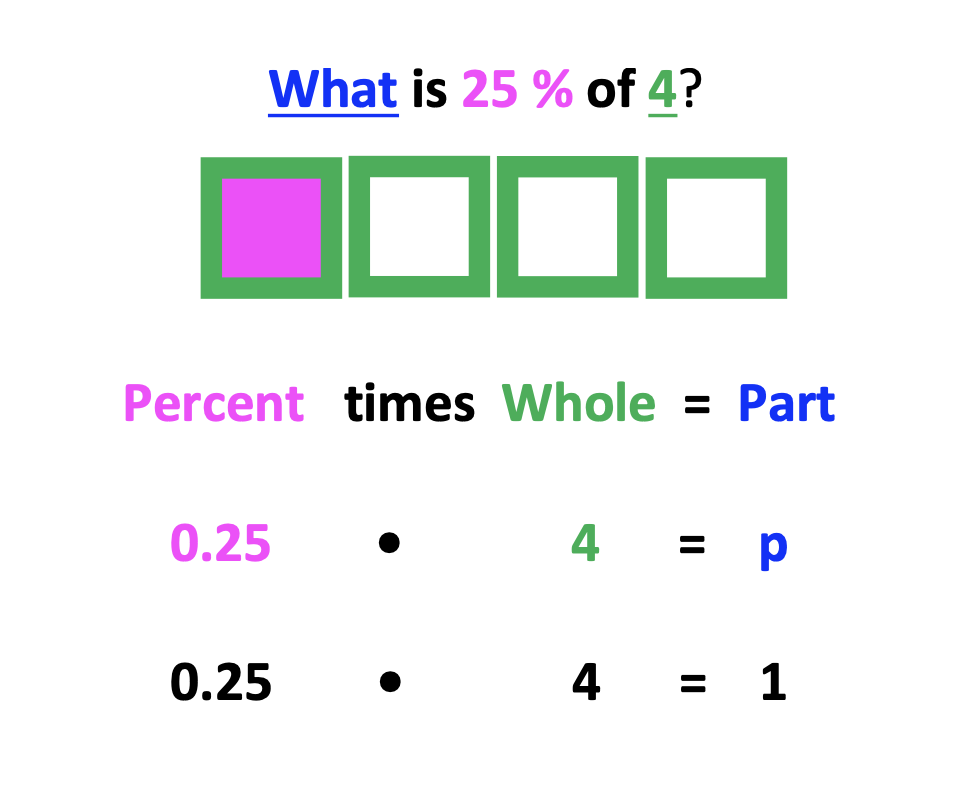
Also, notice the use of color. Color coding is significantly helpful for visual learners. This method helps students differentiate and make connections between words, what the words mean, and the connections words have with the numbers.
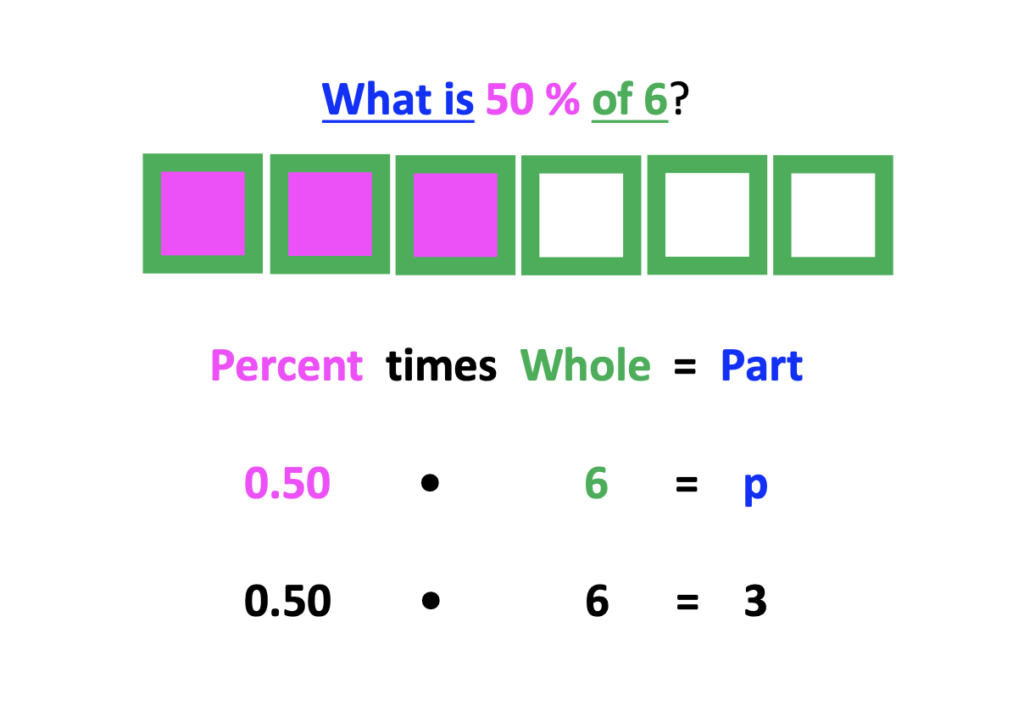
To make box strips for illustration, first enlarge graph paper. Cut the graph paper into strips or outline a row of boxes on the graph paper to use for illustration purposes.
Also, 10×10 graph paper is helpful. Notice how the illustration makes connections between fractions, decimals, and percent. Details are listed below the graph.
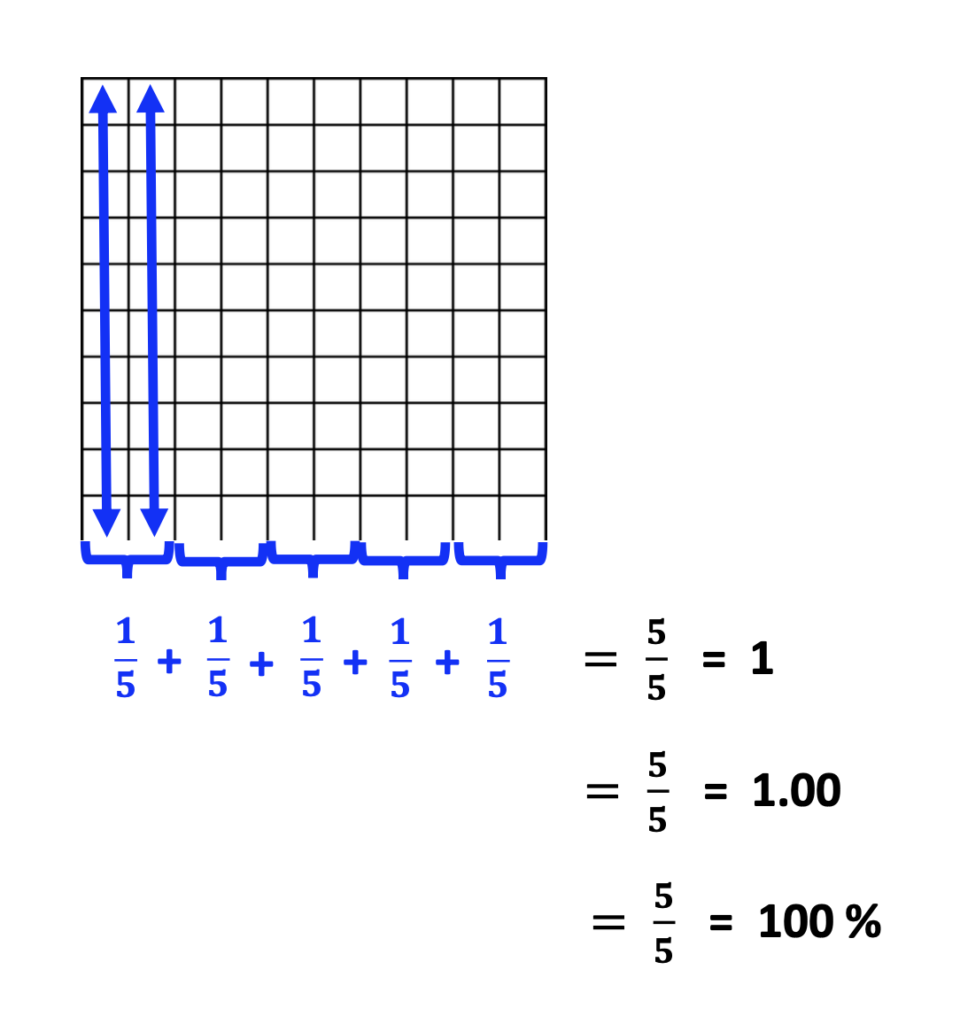
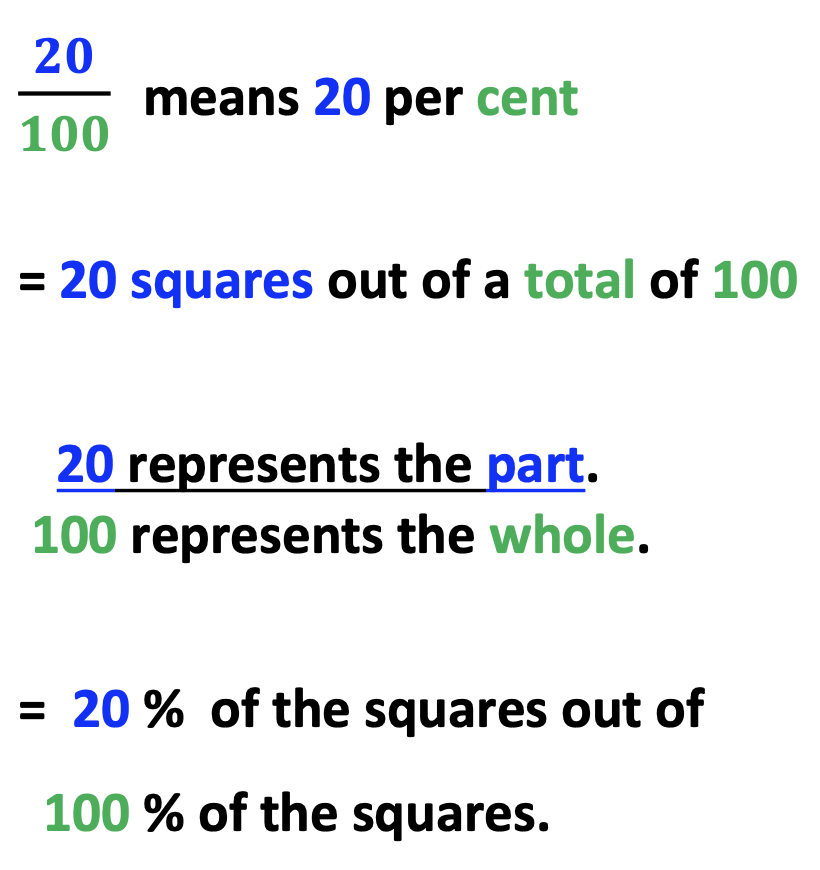
#3 – Consistent Arrangement Increases Student Success
Let’s first look at six percent word problems.
1. Find 23% of 64.
2. What is 68% of 90?
3. What percent of 80 is 56?
4. 52 is what percent of 98?
5. 8 percent of what is 24?
6. 28 is 62 percent of what number?
When students are first introduced to percent word problems and phrases, they do not know where to begin, as each problem appears different and difficult to understand. The solution?
Where there is chaos, create order and consistency.
Keep reading to discover examples that illustrate how this works.
#4 – Examples of Three Types of Percent Word Problems
When solving a percent problem, there are three possible answers. These answers include percent, the whole, and the part. Once students can identify the parts given, they can plug in those values to find the value to answer the problem.
The beauty of this method:
The TEMPLATE REMAINS the SAME
for EACH type of PROBLEM.
This means there is no need to learn multiple ways to solve each problem.
When students encounter a percent problem, the following steps are recommended:
1. Identify the keywords for percent, whole, and part. Color code each keyword.
2. On the template, write in the matching color-coded values.
3. Solve the equation.
Below are examples representing three types of problems and illustrations for each.
A. When Given the Percent and Whole
In these problems, the percent and a number representing the whole are given. The goal is to find the part by plugging the given into the template and then solving the equation.
Example # 1

Example # 2
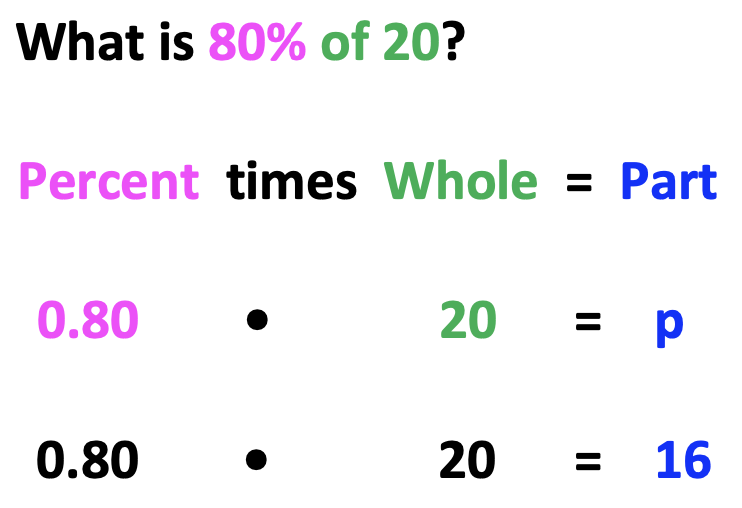
B. When Given the Whole and Part
Furthermore, in these problems, numbers representing the whole and part are given. Notice that the process is very similar to the previous example. The values are plugged into the template, creating an equation for discovering the percent.
Example # 1
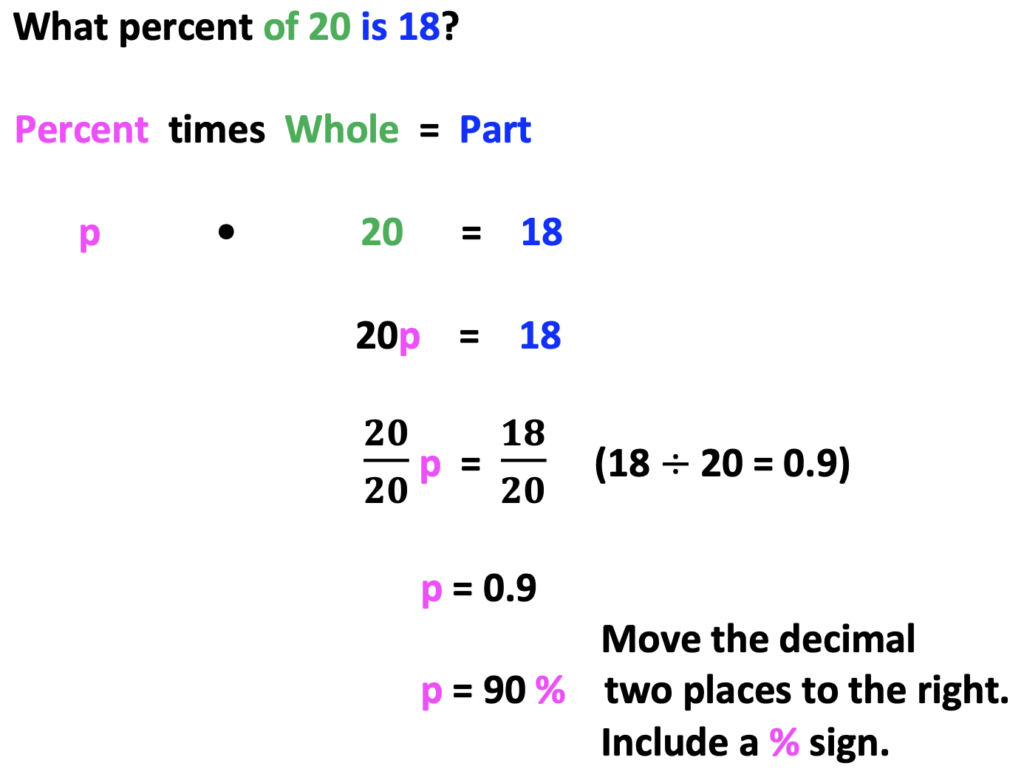
Example # 2
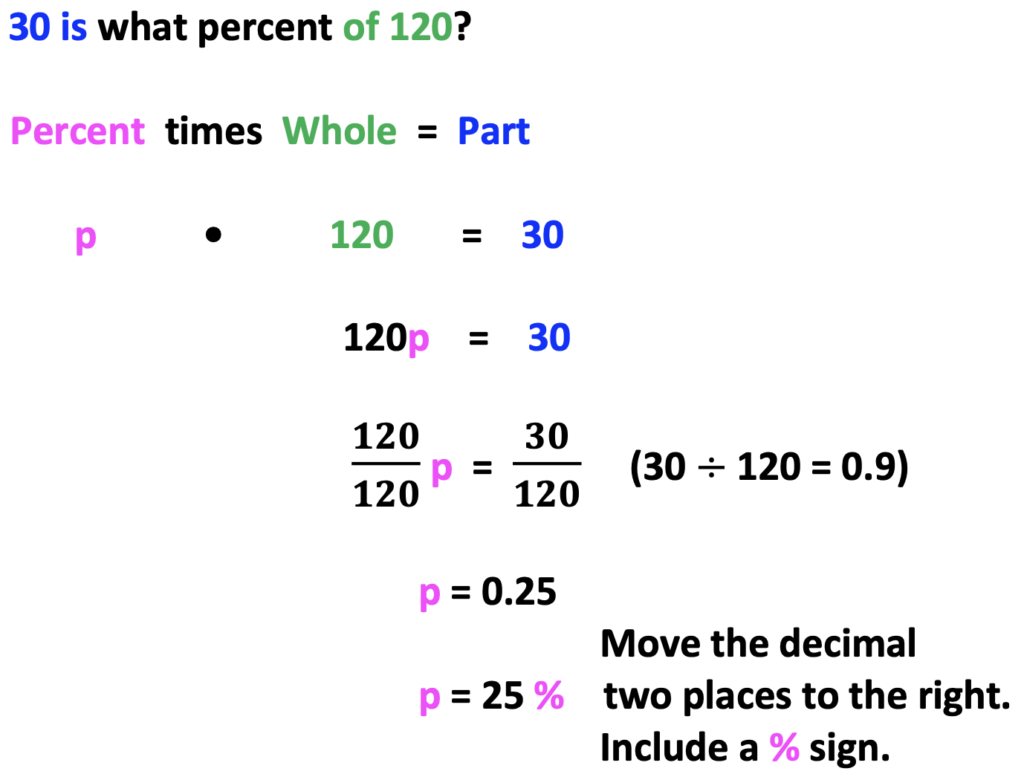
C. When Given the Percent and the Part
Again, two values are given, the percent and the part. The same template is used by plugging in the percent and part, then solving the equation which results in the number value for the whole.
Example # 1
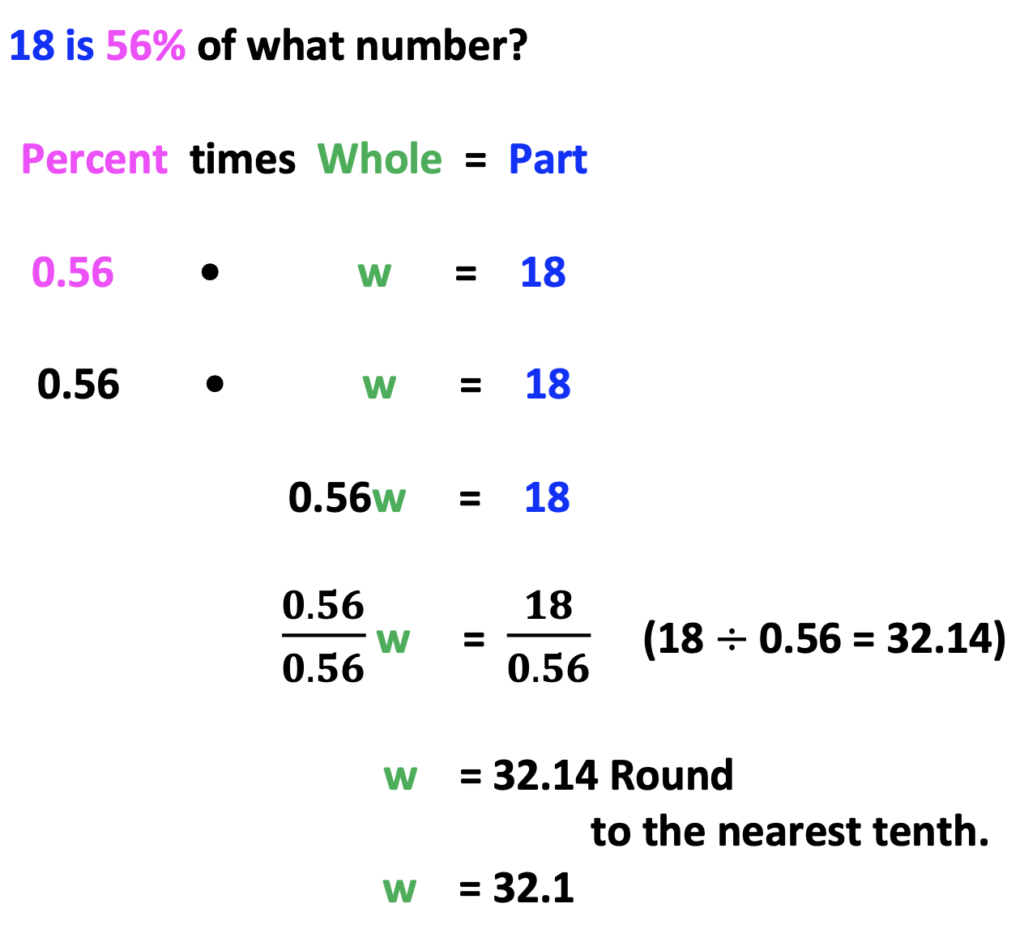
Example # 2
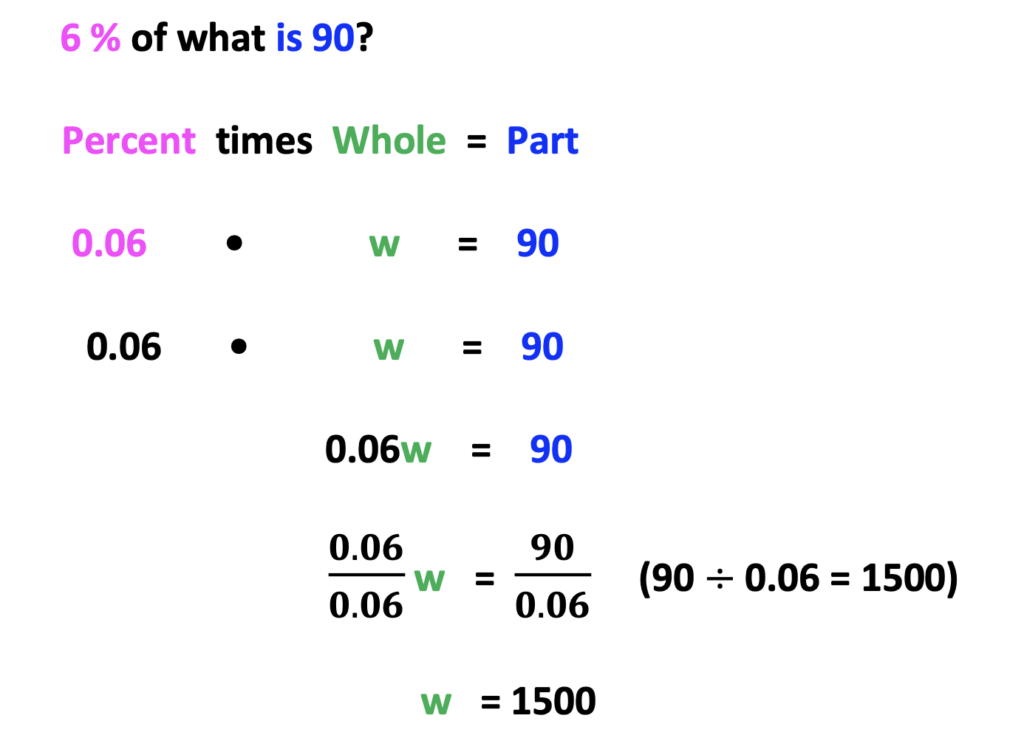
Conclusion
You are now all set! Once your students are confident with conversions, keywords/phrases, and recognize ratio relationships, they are ready to learn strategies for solving percent word problems using color-coding and template strategies.
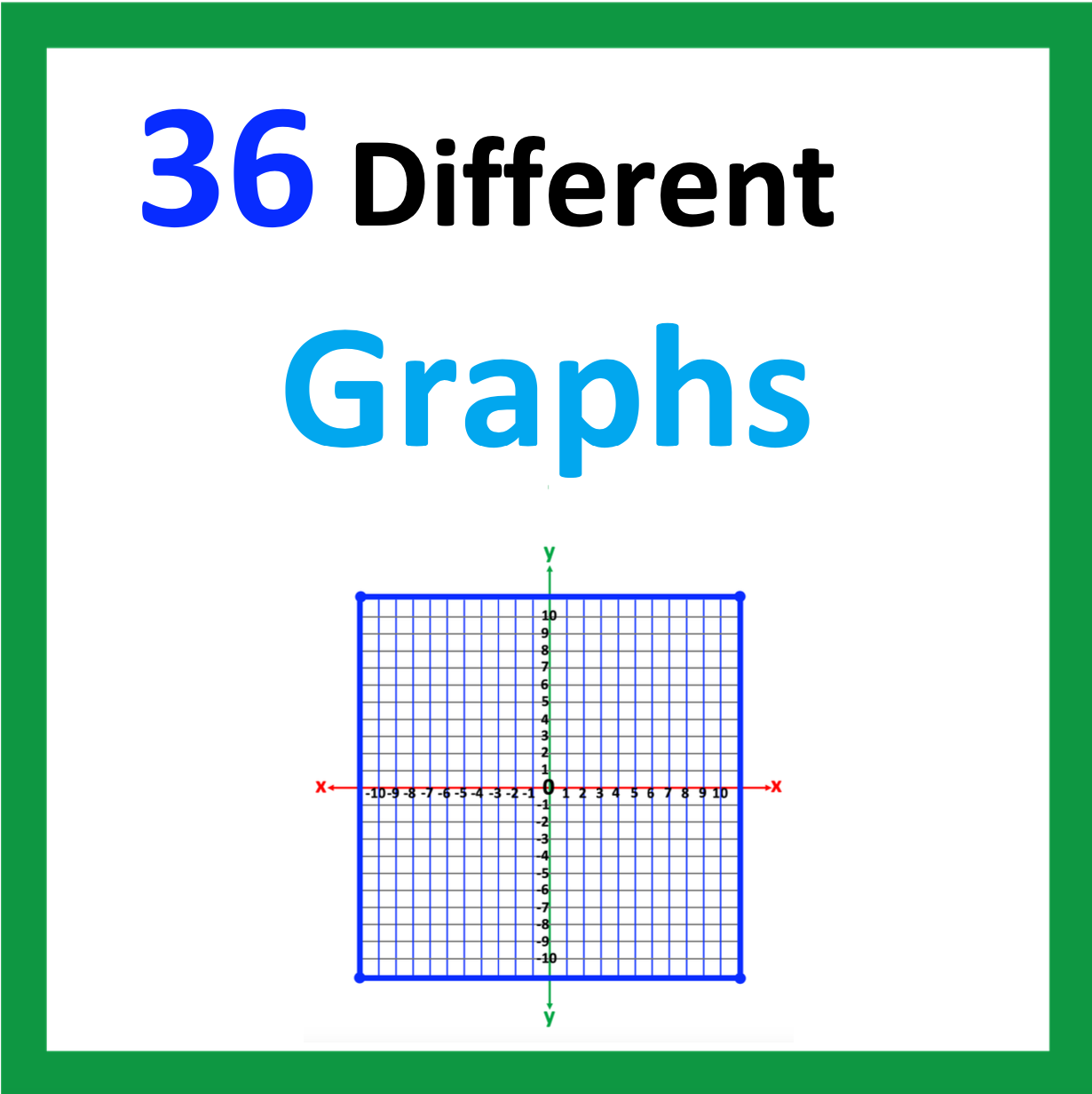
Looking for More Materials?
Click the button below to view more of my educational resources!
